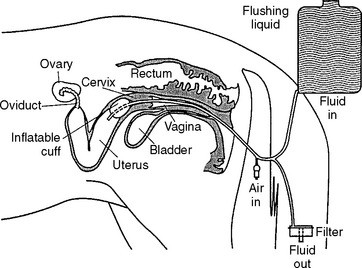
Cryopreservation of Equine Embryos
Equine embryo transfer has been used since 1970s. In the beginning embryos were transferred fresh, therefore recipient and donor had to be at the same place. With the development of cryopreservation (cooled storage) however, it became possible to ship embryos almost worldwide. Equine embryo transfer has now become very popular and has increased over the past years. A big disadvantage to this technique is the lack of superovulation in horses, which leaves only 50%-70% of embryo recovery per cycle. Although cryopreservation has a limited use in horses, there are some definite advantages like decreasing the cost of embryo transfer by minimising the number of recipients, and exportation/importation of embryos, the ability to bank embryos from valuable mares, etc.
Unfortunately, there are also some disadvantages as well. Although pregnancy rates with frozen embryos are as high as 50%-65%, these are still lower than the pregnancy rates achieved with fresh or cooled embryos.
The main factor affecting the survival of an embryo after cryopreservation is the size of it. Embryos bigger than 300 mm cannot survive freezing and thawing and there are several reasons for this presented in this study — one of which is the large amount of blastocoele fluid. This study also discusses the manipulation and trials to modify a large embryo to allow better survival.
In the past embryos were frozen using a slow cooling method. Because of all the disadvantages of this method, alternatives were sought. This is how vitrification started being used. This method prevents ice crystals formation and the liquid turns into a solid, glass-like phase. A disadvantage with this technique is that embryo size is even more crucial. Another study showed that only embryos smaller than 300 mm lead to successful pregnancy.
Freezing embryos after collection and using them later has a lot of advantages, less recipients need to be maintained, cost can be reduced and there is more flexibility. However, there is the need for a lot of improvements. The possibility to consistently superovulate mares can lead to the availability and collection of up to four embryos per flush. Unfortunately, no commercial products are yet available to allow superovulation. Also knowing that best pregnancy rates come from embryos smaller than 300 mm, a technique to consistently collect less than 300 mm big embryos needs to be developed.
There is no doubt that if pregnancy rates from vitrified embryos are nearly equal to the results from fresh embryos, equine embryo cryopreservation will flourish.
> From: Squires et al., JEVS 41 (2016) 7-12. All rights reserved to Elsevier Inc.. Click here for the online summary.


